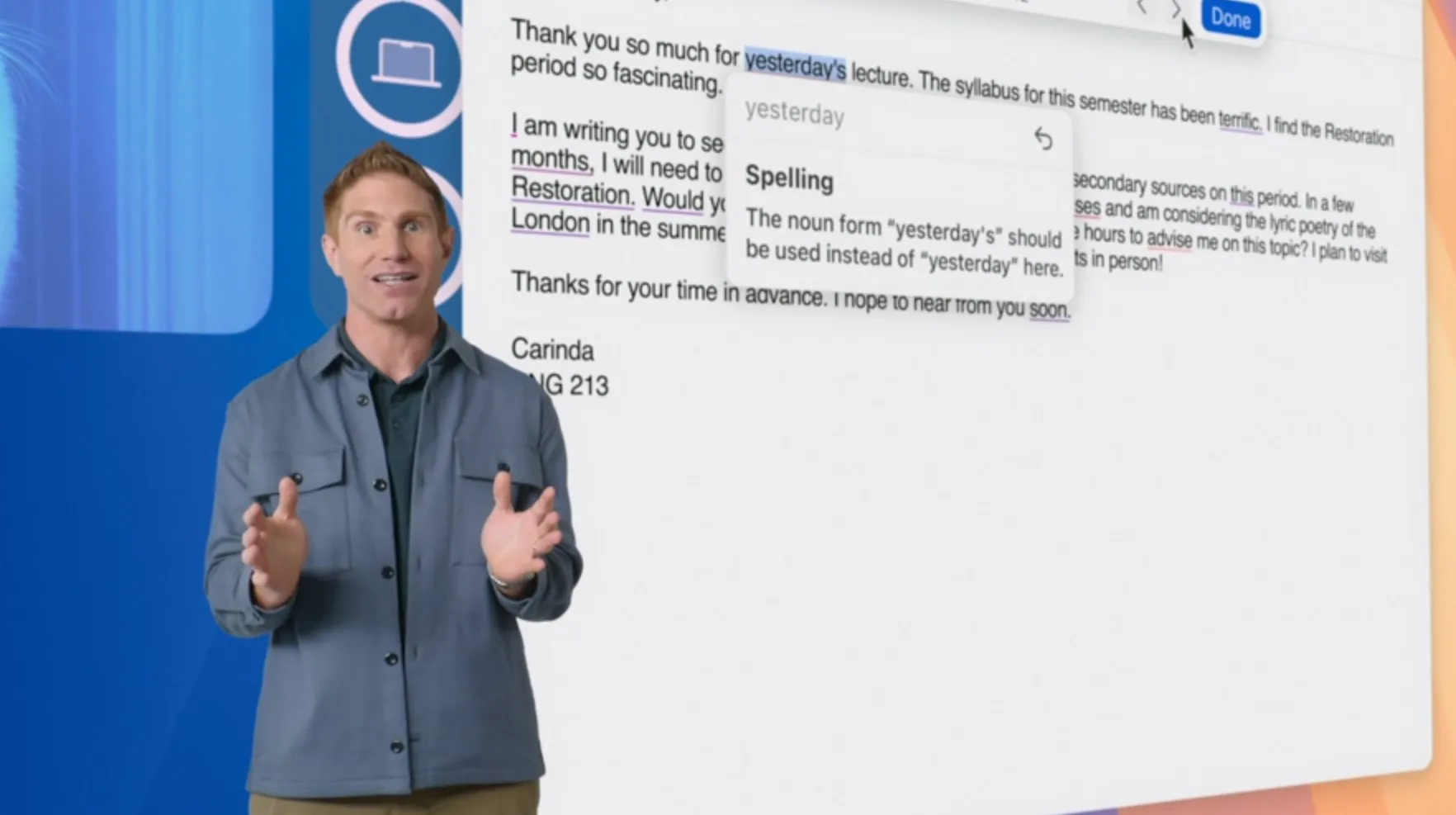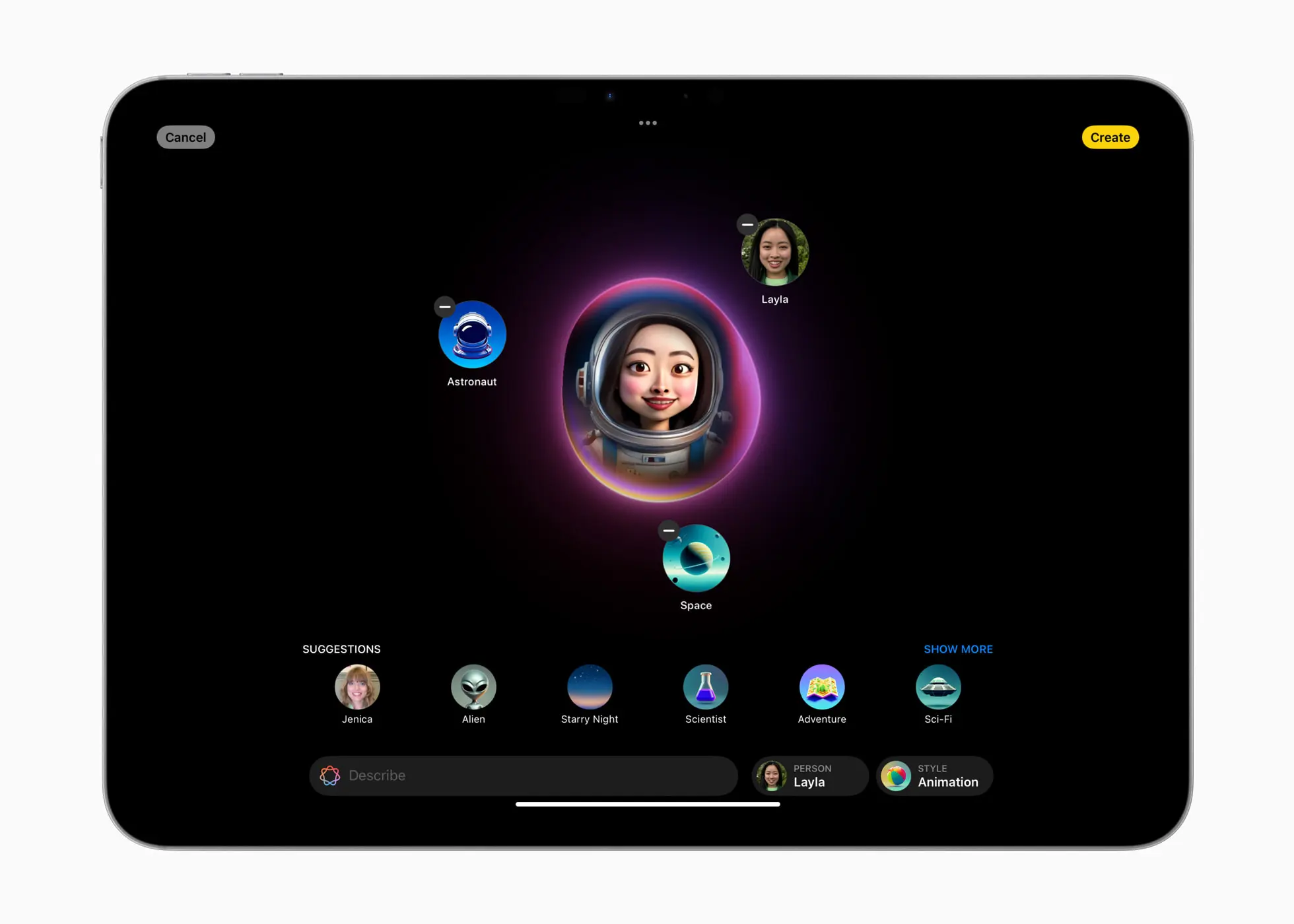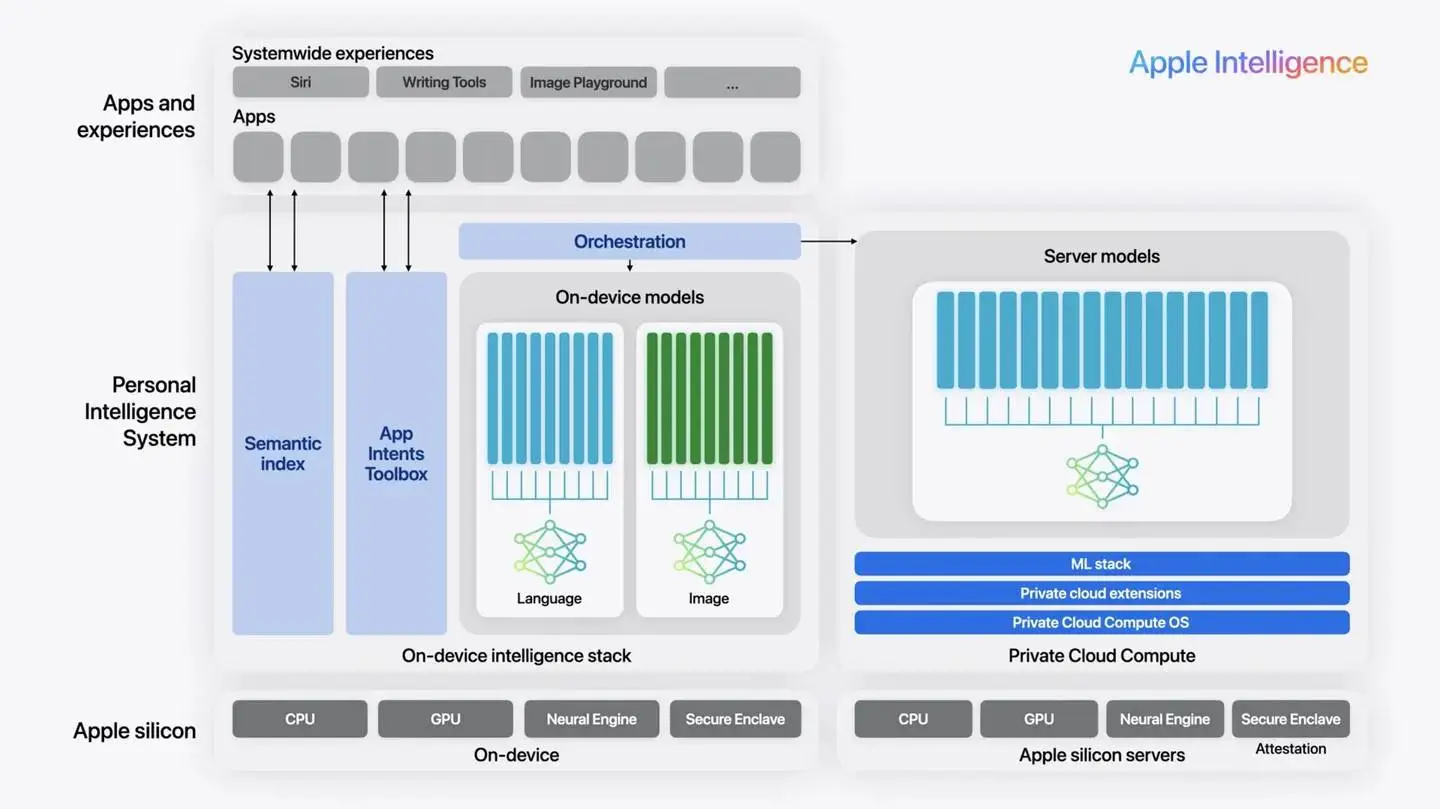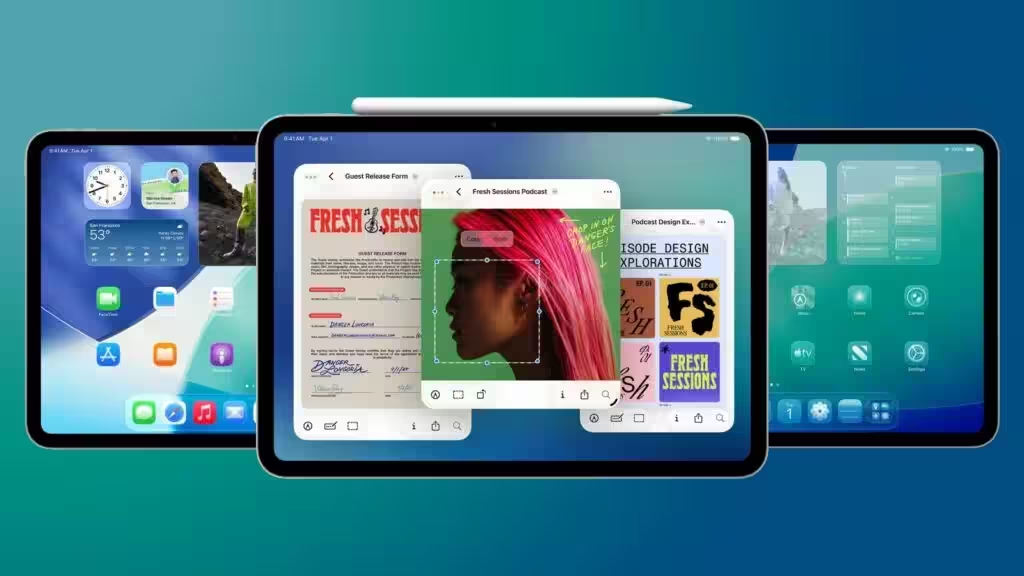Apple Intelligence: a little more about features and privacy

Apple Intelligence — is Apple’s new artificial intelligence project that is set to revolutionize the way we interact with technology by bringing advanced machine learning and artificial intelligence capabilities to everyday devices. The project was announced at WWDC 2024 on June 10.
Nevertheless, almost half a month after the presentation, talk of the new project has not subsided. In some countries, AI features will be severely curtailed, the core functionality won’t be available until 2025, and last year’s iPhone models aren’t even going to support Intelligence yet. But there is still interest among users.
With promises of a more «conversational» Siri speech, automatic proofreading and text analysis in apps, and lightning-fast image generation, Apple’s artificial intelligence ecosystem is designed to improve the user experience and optimize the entire product line. Here’s everything you need to know about Apple’s new transformative AI.
All you need to know about Apple’s new transformative AI.
Apple Intelligence release date and compatibility
Official release of Apple Intelligence is scheduled for this fall and will be included in three major operating system updates: iOS 18, iPadOS 18, and macOS Sequoia.
All three updates are currently in beta for developers, with public betas and official releases coming later this year.
The company clarified that, at least initially, the artificial intelligence features will only be available on the iPhone 15 Pro and 15 Pro Max, as well as iPads and Macs with M1 or newer chips. What’s more, the features will only be available at launch if the user’s language is set to English.
At launch, the features will only be available if the user’s language is set to English.
Why this limitation? Apple insists that these processes are too intensive for older hardware because they use the more advanced neural engines, GPUs, and CPUs of the newer chips.
Apple insists that these processes are too intensive for older hardware because they use the more advanced neural engines, GPUs, and CPUs of the newer chips.
New Artificial Intelligence Features
Whatever device you use Apple Intelligence on, the AI will focus primarily on three functions: texting assistance, image creation and editing, and enhancing Siri’s cognitive capabilities.
Whatever device you use Apple Intelligence on, the AI will focus primarily on three functions: texting assistance, image creation and editing, and enhancing Siri’s cognitive capabilities.
Apple Intelligence is intended to span the company’s entire product line. So virtually all of the features in the macOS version of Apple Intelligence will be reflected in the iOS and iPad versions.
In addition, additional features will be unveiled in iPadOS, paired with the Apple Pencil. For example, Smart Script in the «Notes» app will straighten and smooth handwritten text in real time. The new Math Notes calculator automatically solves equations in your own handwriting and builds interactive graphs based on those equations with a single tap.
Writing Tools

The new Writing Tools feature will be integrated into iOS 18, iOS 18 iPadOS and macOS Sequoia after launch. It will be able to proofread what the user has written and rewrite snippets as needed, as well as summarize text across Apple’s ecosystem of apps, including Mail, Notes, and Pages. Third-party developers will be able to utilize Writing Tools in their apps via API calls.
And third-party developers will be able to use Writing Tools in their apps via API calls.
For example, in «Mail» Apple Intelligence will provide the user with a brief summary of the contents of the «Inbox» rather than showing the first couple of lines of the email itself. The Smart Reply feature will suggest responses based on the contents of the message and ensure that the reply addresses all the questions asked in the original email. The app will even move more timely and relevant correspondence to the top of the «Inbox» folder using the «Priority Messages» feature.
The app will even move more timely and relevant correspondence to the top of the «Inbox» folder using the «Priority Messages» feature.
The «Notes» app will also get significant improvements. Thanks to Apple Intelligence, «Notes» will have new audio transcription and summarization features, as well as a built-in Math Notes calculator that will solve equations typed into the text of a note.
At the same time, there will be new features for transcribing and summarizing audio recordings, as well as a built-in Math Notes calculator that will solve equations typed in the text of a note.
Image Playground for image creation
Image creation and editing functions will largely be handled by the new Image Playground app, where users will be able to create images in seconds in one of three artistic styles: Animation, Illustration and Sketch. Image Playground will exist as a standalone app, and many of its features and functions will be integrated with other Apple apps, such as Messages.
The new Image Playground app will be a standalone app, and many of its features and functions will be integrated with other Apple apps, such as Messages.

Apple Intelligence is also coming to the gallery. The Memories feature in the Photos app is already capable of automatically identifying the most significant people, places, and pets in a user’s life, and then assembling those images into a cohesive collection to music. With the arrival of Apple Intelligence «Memories» will get even better.
Memories will be even better.
AII selects the photos and videos that best match a user-specified query (e.g., «best friends’ trip to Los Angeles in 2024»). It then creates a storyline — including chapters based on themes the AI finds in the selected images — and assembles it all into a short movie. Photos users will also get access to «Cleanup» — a tool similar to Google’s «Magic Eraser» and improved search features when Intelligence goes through a public beta.
And it will be available in a public beta.
Siri
.
Perhaps the biggest set of new Apple Intelligence features will be Siri. Apple’s long-suffering digital assistant will become more deeply integrated into the operating system, with more conversational speech and improved natural language processing.
Siri

Siri’s memory will become more robust, allowing it to remember details of previous conversations, and the user will be able to switch between the assistant’s spoken and written prompts more seamlessly.
Siri’s memory will become more robust, allowing it to remember details of previous conversations, and the user will be able to switch between the assistant’s spoken and written prompts more seamlessly.
Apple Intelligence Privacy
To avoid the costly and embarrassing data breaches that have plagued some of its competitors in recent months, Apple has put privacy at the center of its Intelligence focus and has even gone so far as to create its own private and secure AI computing cloud, called Private Cloud Compute (PCC), to handle complex user requests.
Apple Intelligence
.

According to Craig Federighi, Apple’s senior vice president of software engineering, during WWDC 2024, most AI routines will run on the device, utilizing the latest generations of A17 and M family processors.
She knows about your personal data without collecting it. When you make a request, Apple Intelligence analyzes whether it can be processed on the device. If it needs more computing power, it can leverage Private Cloud Compute and send only the data that’s relevant to your task to be processed on Apple’s servers
Craig Federighi
.
All of this should dramatically reduce the likelihood of hacking, interception, spying, and other fraudulent activity behind a user’s private data as it’s being transferred between the device and the PCC.
Craig Federighi.
Your data is never stored or made available to Apple» — he explained. «They are used solely to fulfill your request, and, as with your iPhone, independent experts can examine the code that runs on those servers to confirm privacy.
Craig Federighi
.
Apple Intelligence’s partnership with ChatGPT

Intelligence won’t be the only advanced generative AI to take up residence in Apple devices this fall. During WWDC, Apple and OpenAI executives announced a partnership that will see ChatGPT (based on GPT-4o) functionality, including image and text generation, integrated into Siri and Writing Tools. Like Apple Intelligence, ChatGPT will come into play if Siri’s built-in capabilities are insufficient to fulfill a user’s request, except that ChatGPT will send the request not to the PCC but to OpenAI’s public computing cloud.
Siri and OpenAI’s public computing cloud.
Users won’t have to look away from the Siri screen when using ChatGPT’s capabilities, Siri will provide a response regardless of where the request was processed. To provide at least a semblance of privacy protection, the device will ask for the user’s permission before transmitting the request along with any attached documents or images.
Siri will not have to leave Siri’s screen when using ChatGPT features.








